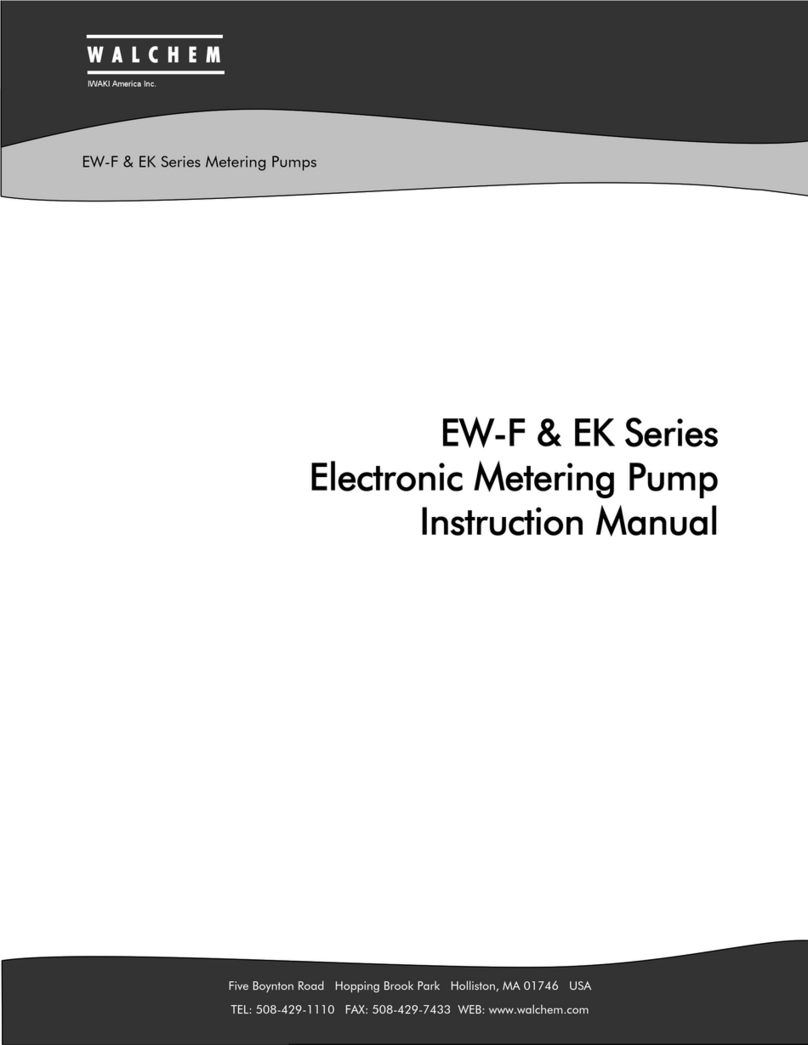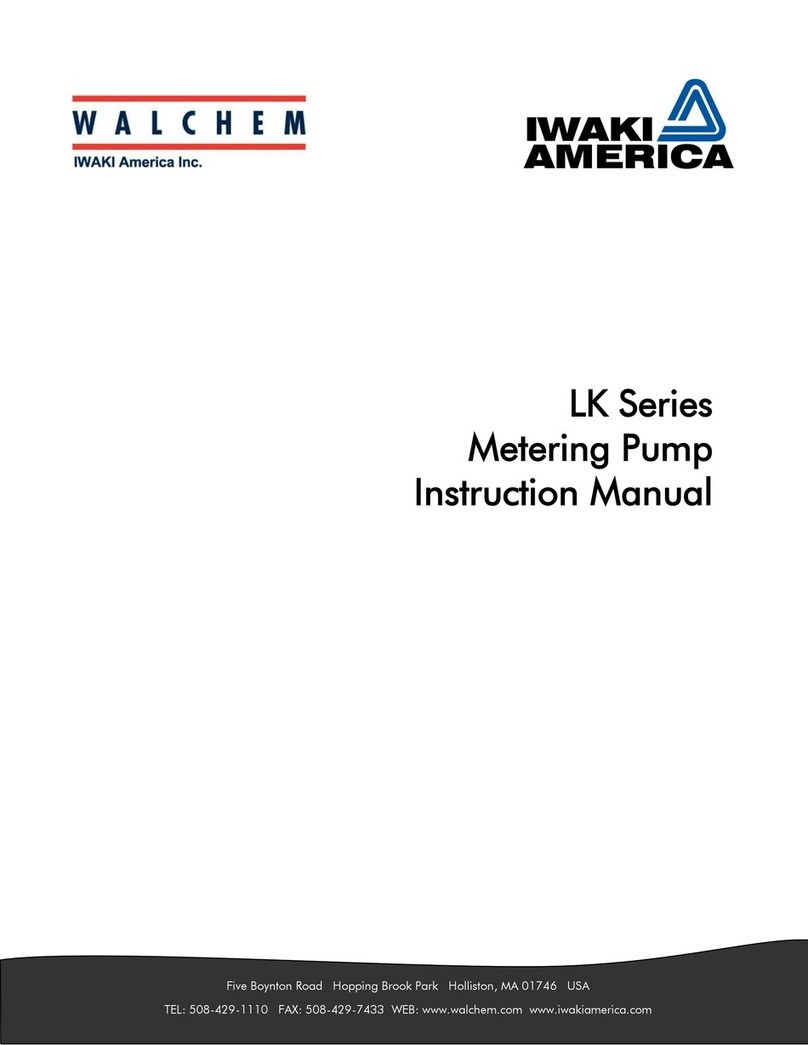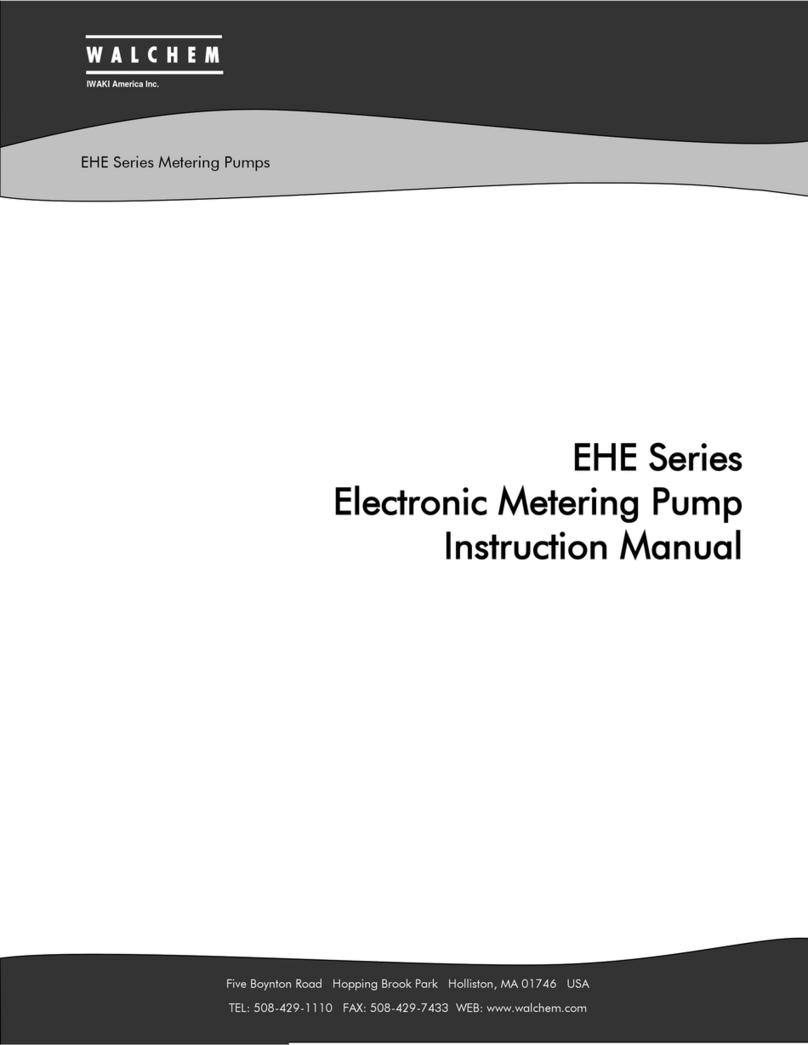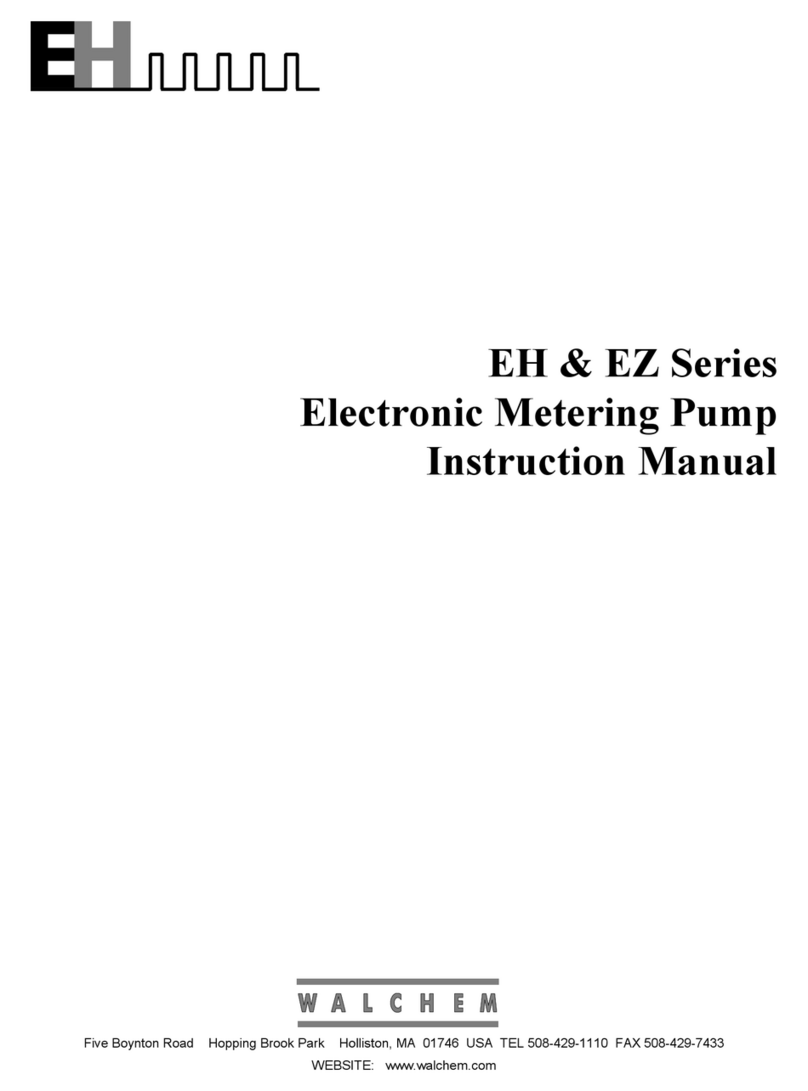
TABLE OF CONTENTS
Thank you for choosing a Walchem EZ Series metering pump. This instruction manual deals with the cor-
rect installation, operation, maintenance and troubleshooting procedures for the EZ metering pumps. Please
read through it carefully to ensure the optimum performance, safety and service of your pump.
Contents
1.0 INTRODUCTION ..................................................................................... 1
1.1 Safety and Caution Notes ................................................................................................................. 1
1.2 Principle of Operation........................................................................................................................ 1
1.3 Model Code ....................................................................................................................................... 2
1.4 Specications .................................................................................................................................... 2
1.4.1 Electrical .............................................................................................................................................. 2
1.4.2 Operating Conditions .............................................................................................................. 2
1.4.3 Capacity/Pressure Rating ....................................................................................................... 3
1.4.4 Adjustment Range................................................................................................................... 3
1.4.5 Materials of Construction ........................................................................................................ 3
1.5 Dimensions........................................................................................................................................ 4
2.0 INSTALLATION ....................................................................................... 6
2.1 Unpacking ......................................................................................................................................... 6
2.2 Location............................................................................................................................................. 6
2.3 Supply Tubing.................................................................................................................................... 7
2.4 Discharge Tubing .............................................................................................................................. 8
2.5 Installing Injection/BackPressure Valve............................................................................................. 8
2.6 Interlocking Pump.............................................................................................................................. 9
2.7 Electrical............................................................................................................................................ 9
3.0 OPERATION............................................................................................ 9
3.1 Priming .............................................................................................................................................. 9
3.2 Adjustment and Control..................................................................................................................... 10
3.3 Calibration ......................................................................................................................................... 13
3.4 STOP Function.................................................................................................................................. 13
3.5 AC Power Interruption ....................................................................................................................... 13
3.6 Auto Air Vent Valve Operation........................................................................................................... 14
3.7 MultiFunction Valve Operation .......................................................................................................... 14
4.0 MAINTENANCE ..................................................................................... 16
4.1 Diaphragm Replacement................................................................................................................... 16
4.2 Valve Replacement ........................................................................................................................... 16
4.3 Tubing ............................................................................................................................................... 16
5.0 EXPLODED VIEW & PARTS GUIDE......................................................17
6.0 TROUBLESHOOTING ............................................................................27
7.0 SERVICE POLICY...................................................................................27

































